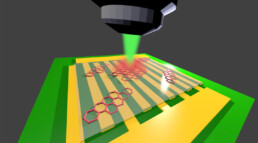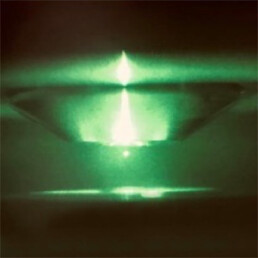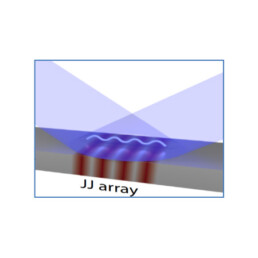Hybrid Systems for Quantum Technologies
Coordinator : Alexandre BOUZDINE (LOMA)
We are now at the dawn of a second quantum revolution. While the first quantum revolution gave us new principles that govern physical reality, the second one uses these principles to develop new technologies e.g. quantum information processing, quantum measurements and sensing and quantum simulations. The emergence of these applications has been made possible by recent progress in the control and manipulation a wide range of quantum systems, ranging from single photons, atoms and molecules, to Bose-Einstein condensates and mesoscopic superconducting and nanomechanical structures. Owing to their physical properties, some of these systems are better suited than others to specific tasks; for example, photons are well suited for the transmission of quantum information, low-interacting atoms or spins can serve as long-lived quantum memories, and superconducting elements can rapidly process information. Quantum systems that are poorly coupled to their environment are well protected but are in contrast difficult to control within short time scales, and vice versa. Therefore, it is difficult to manipulate and store quantum information on a single system.
Hybrid quantum systems combine in a well-controlled manner different quantum states from the fields of optics, atomic physics and condensed matter physics and can achieve capabilities that are not available with each system alone. Hybridization is the key to coherently control complex quantum properties needed for novel quantum-enhanced technologies. In this thrust, we study hybrid systems composed of quantum bricks having complementary functionalities, with the aim of developing multi-task quantum devices capable of simultaneously and reliably storing, processing and transmitting quantum information.
The Bordeaux teams involved in this line of research have internationally recognized expertise in cold atom physics, nanophotonics, single nano-object spectroscopy, nano-opto-mechanics and superconductivity. Hybrid systems resulting from the combination of these domains of expertise catalyze new ideas at the frontier of research, which can be used for fundamental research in quantum mechanics, mesoscopic physics and condensed matter physics, or exploited in various applications such as quantum-limited sensors and transducers, or as quantum simulators.
This major research theme is organized in three main axis.
1. Hybridizing mechanical nano-oscillators with quantum systems
Nano-mechanical oscillators have attracted considerable interest in recent years. They benefit from an extremely strong opto-mechanical coupling that allowed ground state cooling, and very efficient force and information transduction. In addition, mechanical resonators are scalable and their strong optical coupling makes them very good candidates to transduce superconducting MW quantum information to flying photonic qubits, which is essential for perspectives in quantum telecommunication applications. If it represents a promising solution, the quantum control of nano-resonators remains very challenging as they are physically anchored to their environment, which opens many decoherence channels. Solutions to manipulate quantum mechanical motion of a nanooscillator involve a combination of reduction of decoherence mechanisms, increase of their coupling strength and coherent transfer of the information to a protected system.
We will address these three different approaches in order to develop innovative schemes to reach the quantum regime of a nano-oscillator and to control and manipulate its quantum states.More precisely, we will study the single-molecule cooling and activation of a nano-oscillator and plan to demonstrate cooling and coherent transduction of mechanical-oscillator phonons into long-lived spin states in a cold atomic cloud. Special attention will be dedicated to low-dissipation oscillators, consisting of optically trapped nanoparticles, and to the study of their optical and sympathetic cooling mechanisms.
2. Collective effects in hybrid quantum systems
Collective effects and the subsequent delocalization, non-linear dynamics and spontaneous self-organization effects are abundant in nature, sciences and technology. These processes are found in non-linear optics and condensed matter physics, in chemistry and even in biology, across both classical and quantum regimes. Understanding these effects is important not only from a fundamental point of view but also for quantum technologies, with the urgent need for complex systems with robust coherent quantum dynamics. We will first address these effects in the context of light-matter interaction and spontaneous emission from an ensemble of coherently coupled quantum emitters. Tuning the collective spontaneous emission rate of several interacting quantum emitters in specific material platforms will enable the development of novel photonic applications. Collective effects can also be central to the field of quantum control.
We will study first a pairs of coherently coupled aromatic molecules as model systems with the aim to achieve control and manipulation of their degree of entanglement and demonstrate molecular quantum logic gates. We will then explore the collective effects occurring in 2D and 3D self-organized superlattices of perovskite nanocrystals, and study, theoretically and experimentally, the quantum optical signatures of delocalized excitonic states in these super-structures.
Collective effects at the origin of exotic phases of matter can emerge from strong correlations in quantum many-body systems. These systems remain mostly elusive to the quantum physics and condensed matter communities, although they may be of great importance for understanding the behavior of high-Tc superconductors or the properties of edge states in topological insulators. In this context, ultra-cold atoms trapped in optical lattices are toy-model systems for simulating problems in condensed matter physics. We will develop a new type of 2D quantum simulator based on a hybrid quantum system consisting of ultra-cold atoms and nano-structured electromagnetic potentials. This approach will break with the current methods of interfering laser fields. It will allow trapping cold atoms in subwavelength lattices and their manipulations at distances < 100 nm from surfaces.
3. Macroscopic quantum states, nanooptics & magnetism interplay
We plan to explore and exploit the interplay between nano-optics, magnetism and macroscopic quantum states in superconductors and in Bose-Einstein condensates in order to decipher fundamental properties of specific macroscopic states and to lay the foundations of new applications.
A promising alternative to semiconductor electronics is the development of superconducting devices based on Josephson junctions, which can be advantageously used as elementary bricks for supercomputers due to their high operating terahertz frequencies and low switching energies.
With a view to achieving local and precise control of the Josephson transport, the generation and manipulation of individual Abrikosov vortices in superconductors is appealing. These nanometric-sized objects carrying a flux quantum are the most compact magnetic objects in superconductors. Single vortices can therefore be utilized as flux-quanta bits for the design of high-density digital cryoelectronics. We will develop innovative approaches that integrate optics and/or optomagnetism to the operation of Josephson junctions, using the recent method of single-vortex far-field optical tweezers.
We will explore the generation of planar Josephson junction structures by laser illumination of raw superconducting films. Using structured optical illumination, we will design and produce new macroscopic quantum states by optically imprinting phase patterns onto a raw superconductor film and study their properties.
We plan to study the dynamics of optically driven arbitrary spin textures in the Bose Einstein condensates of alkali atoms with complex internal (spin) level structure. By changing the phase of the standing wave, we can prepare an arbitrarily complex one-dimensional texture far from equilibrium and study its relaxation. The state preparation is optical and much faster than the spin-mixing timescale, which allows an arbitrarily quick texturing in one dimension. It will be possible to perform sub-wavelength spinor tomography as well as investigate out-of-equilibrium dynamics, glassiness and quantum turbulence that require accessing sub-wavelength spinor state readout.
Selected Publications
Universal scaling laws for charge-carrier interactions with quantum confinement in lead-halide perovskites
Philippe Tamarat, Elise Prin, Yullia Berezovska, Anastasiia Moskalenko, Tan Nguyen, Chenghui Xia, Lei Hou, Jean-Baptiste Trebbia, Marios Zacharias, Laurent Pedesseau, Claudine Katan, Maryna Bodnarchuk, Maksym Kovalenko, Jacky Even, Brahim Lounis, Nature Communications 14 (2023) 229
Toward the Light-Operated Superconducting Devices: Circularly Polarized Radiation Manipulates the Current-Carrying States in Superconducting Rings
M. Croitoru, S. Mironov, B. Lounis and A. Buzdin, Advanced Quantum Technologies, 2200054 (2022)
Charge-transfer chemical reactions in nanofluidic Fabry-Pérot cavities
L. Mauro, K. Caicedo, G. Jonusauskas, R. Avriller, Phys. Rev. B., 103, 165412 (2021)
Giant diffusion of nanomechanical rotors in a tilted washboard potential
L. Bellando, M. Kleine, Y. Amarouchene, M. Perrin, and Y. Louyer, Phys. Rev. Lett. 129, 023602 (2022)
Quantitative absorption imaging: The role of incoherent multiple scattering in the saturating regime
Romain Veyron, Vincent Mancois, Jean-Baptiste Gerent, Guillaume Baclet, Philippe Bouyer, and Simon Bernon, PHYSICAL REVIEW RESEARCH 4, 033033 (2022)



